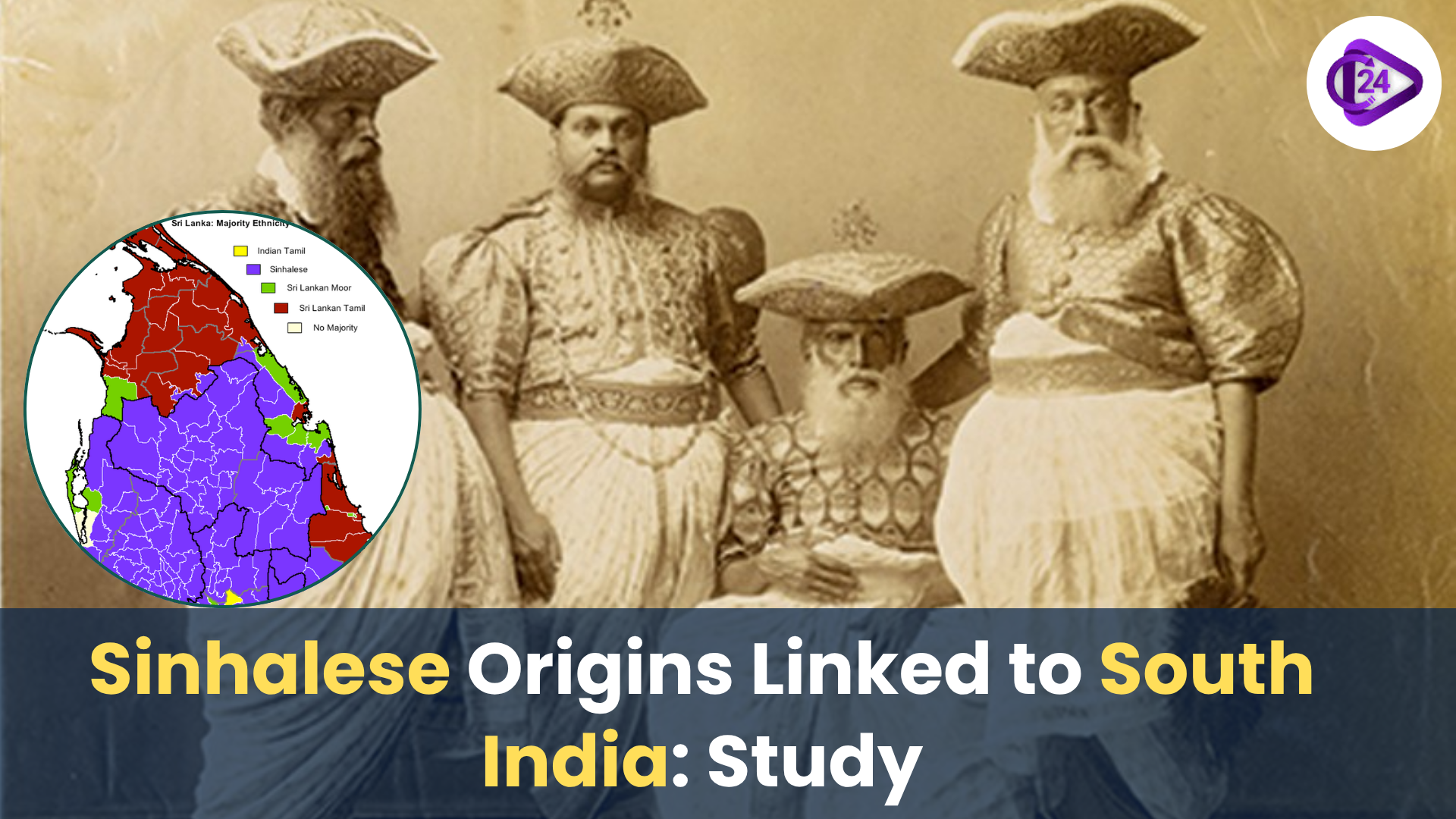
A genetic research conducted recently has found out that Sinhalese people in Sri Lanka were probably a population, originated in Southern India, between proto-historic times and 3,000 years back, followed by an amalgamation by the neighborhood inhabitants, known as the indigenous Adivasi. The article was published in Current Biology and involved studying whole-genome sequences of Sinhalese, and two Adivasi clans Coastal and Interior, and Sri Lankan Tamils. The study disputes previous theories of Sinhalese origins being in places in North India and how genetic evidence showed that the Sinhalese were genetically closer to the Dravidian-population groups in South India. It also throws light to population diversity, endogamy and genetic health risk among Adivasi communities.
Context
-
The Sinhalese are genetically the nearest to South Indian Dravidians populations and the Sri Lankan Adivasis as indicated in new genome data, invalidating earlier theories about northern Indian ancestries.
-
In the research, there is also rich information about genetic isolation and health predisposition of Adivasi tribes.
Key Points
Study Highlights
-
Publication date: October 1, 2024
-
Procedure: Sequencing of the entire genome of:
-
35 Sinhalese urbanites
-
19 5 Interior, 14 Coastal adivasi people
-
Sri Lankan Tamils (1000 Genomes Project, 35)
-
Genetic Introductions
-
Sinhalese are highly genetically related with:
-
South Indian populations who speak Dravidian South indian
-
Sri Lankan Adivasis clans
-
Little Steppe affiliation among Sinhalese (as opposed to the North Indians)
-
There is no significant genetic connection to North India, notwithstanding Indo-European language (Sinhala)
-
Language Vs Genetics
-
Sinhala language is Indo-European which usually is in northern India
-
Genetic information refutes linguistic presumption
-
Potential cause: non-significant-gene-flow language transmission (the elite dominance model)
Adivasi Insights
-
Traditional hunter-gatherer being that has more past ancient hunter gatherer heredity
-
On a refinements, genetically different than Sinhalese
-
Endogamy at display and population size Smallness
-
Interior Adivasi possess greater genetic drift and low diversity in comparison to Coastal Adivasi
Historical Correlation
-
Migration of Sinhalese reaches back to ~3,000 years ago which coincided with Sri Lankan chronicles (500 BCE)
-
India (ANI-ASI era) was the scene of dynamic mixing of the genes, which was a case of migration of the genetic material.
-
Sustained cultural exchange is genetically supported by the biological connections between India and Sri Lanka
Conclusion
This pioneering genome research changes our perception of Sinhala ancestry in that a substantial genetic inheritance had a strong South Indian basis instead of a northern source. Moving forward it also underlines the centrality of genetics in unlocking the history of migration and emphasizes the necessity to pay attention to how health and demographic principles can target a discontinuous, vulnerable group of Adivasis in Sri Lanka.



 Maldives Becomes First Nation to Enforce Generational Smoking Ban
Maldives Becomes First Nation to Enforce Generational Smoking Ban Trump Honored with South Korea’s Grand Order of Mugunghwa
Trump Honored with South Korea’s Grand Order of Mugunghwa Russia Stuns the World with Successful Burevestnik Nuclear Missile Test, Confirms Putin
Russia Stuns the World with Successful Burevestnik Nuclear Missile Test, Confirms Putin NASA Confirms Earth Now Has a Temporary Second Moon Named 2025 PN7
NASA Confirms Earth Now Has a Temporary Second Moon Named 2025 PN7 Timor-Leste Officially Becomes ASEAN’s 11th Member Nation
Timor-Leste Officially Becomes ASEAN’s 11th Member Nation Rodrigo Paz Elected Bolivia’s President: A New Era Begins
Rodrigo Paz Elected Bolivia’s President: A New Era Begins Astronomers Discover Evolving Ring System Around Icy Body Chiron Beyond Saturn
Astronomers Discover Evolving Ring System Around Icy Body Chiron Beyond Saturn Sundarbans Aquaculture Model Wins FAO Global Recognition for Sustainability
Sundarbans Aquaculture Model Wins FAO Global Recognition for Sustainability Maldives Achieves Landmark Success in Protecting Newborns from HIV, Hepatitis B, and Syphilis
Maldives Achieves Landmark Success in Protecting Newborns from HIV, Hepatitis B, and Syphilis UN Human Rights Council Elections: India Wins Membership for 2026–2028
UN Human Rights Council Elections: India Wins Membership for 2026–2028






